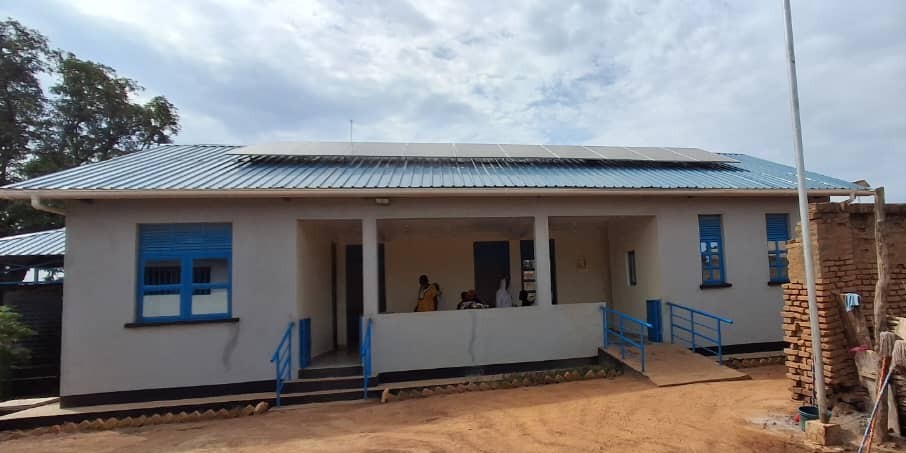
For years, residents of Wau municipality in Western Bahr el Ghazal State lived with a silent fear that illness or childbirth could turn fatal before help arrived. The long journeys to the nearest hospital in Wau town often cost lives, especially among mothers and children in remote villages.
Today, that story is changing. Two newly built Primary Health Care Units (PHCUs) in Hai Dinka and Kaabi payams are transforming access to healthcare for thousands of families.
The facilities, constructed by the International Organization for Migration (IOM) under the government-led Enhancing Community Resilience and Local Governance Project Phase II (ECRP II) and funded by the World Bank, are bringing lifesaving services closer to home.
At Hai Dinka PHCU, a young mother named Mary Daniel, 25, was the first to give birth in the new maternity wing. Her newborn son, wrapped in a white blanket, symbolizes the safety she once only hoped for.
“The baby had complications, but the midwives helped me deliver safely. Before, we would have had to travel far, sometimes women didn’t make it,” she said.
Nearby, midwife Saraf Augustino, who leads the facility, said the new clinic has not only improved patient care but also given health workers the space and tools to work effectively.
“We used to deliver babies in a small, dark room. Now, mothers give birth in clean beds with proper lighting and privacy. We also provide HIV testing and family planning,” she said.
In Kaabi Payam, the new PHCU has become a community lifeline. With a maternity ward, borehole, latrines, and fencing, it now serves dozens of patients each week.
Christine Joseph, 55, remembers when sick children had to be rushed to Wau town, more than 40-minute journey that many couldn’t afford.
“Now, treatment is minutes away. The clinic treats our children and pregnant mothers. It has changed everything,” she said.
Health worker Grace Benjamin Victor said malaria, fever, and skin infections remain the most common illnesses, but early treatment is saving lives.
“We receive up to 16 patients a day,” she said. “Even when medicines run out, the community contributes funds to restock. People feel this facility belongs to them.”
Local leaders share that pride. Michael Angelino, acting chief of Kaabi Payam, said the clinics have ended the days of unsafe home deliveries.
“Our mothers used to give birth in the bush. Now, they deliver safely with trained midwives. This is progress we can see,” he said.
For IOM Project Manager Alexander Bartoloni, the success of these health centers shows what partnership and community ownership can achieve.
“These results show that when communities take part in their own development, they build resilience and lasting change,” he said.
Where distance once meant danger, care is now within reach. For the people of Wau, these new clinics are not just buildings, they are symbols of life, dignity, and a new chapter in public health.

